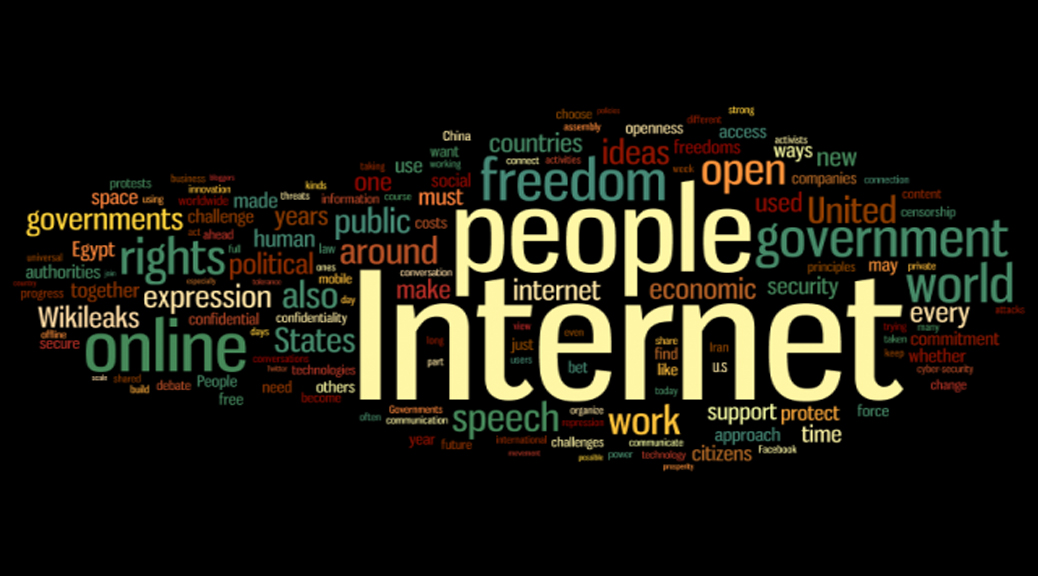[Ed Note : In a slightly longer read, Pranay Bhattacharya, a second year student of Maharashtra National Law University (MNLU) Aurangabad talks about the origins and development of the “Right to be Forgotten,”, using this as a background to critically analyze this right as present in India’s Draft Personal Data Protection Bill 2018.] “Blessed are the…
Category: Censorship
Do not ‘Offend, Shock, or Disturb’: Destroying the Raison d’être of Free Speech
[Ed Note : In a post that has previously been published here, Hardik Subedi of NALSAR University of Law offers a scathing critique of Nepal’s New Information Technology Bill. Do read to find out more!] “They claim that they have brought in democracy overthrowing monarchy, But today even they have turned as lamentable as the…
Dr. Usha Ramanathan’s Talk on the UIDAI Litigation
[Ed Note : The following post is based on Dr. Ramanathan’s enlightening talk at the NALSAR University of Law, Hyderabad. It has been authored by Karthik Subramaniam and Yashasvi Raj, first year students of the aforementioned university, who, in a slightly longer but informative read aptly put forth Dr. Ramanathan’s views on the Aadhar issue and its judicial journey. Dr. Usha…
Comments on the Srikrishna Committee Report and the Draft Data Protection Bill 2018 – V
[Ed Note : The following post, the fifth post in the series of posts containing comments to the Report and Draft Bill, 2018 published on the MeitY website, has been authored and compiled by students of NALSAR University of Law. This post contains comments on data localisation framework put forth by the Committee. The first…
Comments on the Srikrishna Committee Report and the Draft Data Protection Bill 2018 – IV
[Ed Note : The following post, the fourth post in the series of posts containing comments to the Report and Draft Bill, 2018 published on the MeitY website, has been authored and compiled by students of NALSAR University of Law. This post contains comments on the amendment to Section 8(1)(j) of the RTI Act, 2005…
Comments on the Srikrishna Committee Report and the Draft Data Protection Bill 2018 – II
[Ed Note : The following post, the second post in the series of posts containing comments to the Report and Draft Bill, 2018 published on the MeitY website, has been authored and compiled by students of NALSAR University of Law. This post contains comments on the Report and Draft bill in relation to the AADHAR…
Comments on the Srikrishna Committee Report and the Draft Data Protection Bill 2018 – I
[Ed Note : The following series of posts contain comments on the Srikrishna Committee Report and the Draft Data Protection Bill, 2018 made and compiled by students from NALSAR University of Law -Ankush Rai, Ashwin Murthy, Arvind Pennathur, Namratha Murugesan, Priyamvadha Shivaji, Shweta Rao, Sriram Kashyap, Vishal Rakhecha and Tanvi Apte. The comments have been uploaded…
YouTube and Censorship
One of the most discussed topics in the world today is how much we can trust the sources of news around us. Fake news seems to be running rampant and it is obvious that we have to evaluate how much faith to put in what we read. That being said, the situation becomes considerably worse…
LEGAL ISSUES SURROUNDING SEARCH ENGINE LIABILITY
Ed. Note.: This post, by Sayan Bhattacharya, is a part of the NALSAR Tech Law Forum Editorial Test 2016. Search engines which are quintessential to our internet experience are mechanisms of indexing and crawling through data to provide us with a list of links which are most relevant to both our present and past searches….
Internet Rights in Africa: A Comment
(Image Source: owni.fr) The Internet is an enabling space. It provides us with the realization of our basic human rights, including the right to freedom of expression, opinion, thought and belief. In this blog post, I have tried to give an overview of the recent developments with regard to the Internet rights in Africa.
